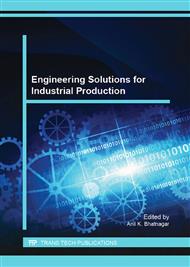p.352
p.357
p.363
p.368
p.373
p.378
p.385
p.390
p.394
Overvoltage Analysis Considering Transmission Tower Models Based on Impedances and Inductances
Abstract:
It is clear that lightning strokes produce overvoltages on Transmission Lines (TLs), which can be higher that the Basic Insulator Level (BIL), generating a fault or short circuit. Thus, in order to adequately analyze when a lightning hits on a TL, it is necessary to simulate different elements corresponding to Electric Power Systems (EPSs) as real as possible. In this context, transmission towers are considered crucial parameters in lightning studies, which must be correctly selected and simulated in order to consider reflected voltage waveforms from cross arms. Based on the above said, this paper presents a comparative study corresponding to the transmission tower simulation using two models. The first uses inductances, and the second uses distributed parameters impedances characterized by their impedance and travel time. This paper presents voltage variations that exist in each phase, using different lightning features. Alternative Transients Program (ATP) is used to simulate the TL model considering different lightning currents and the two tower models. Results show that the impedance model analyze reflected waveforms, while that the inductance model does not analyze this issue.
Info:
Periodical:
Pages:
373-377
Citation:
Online since:
July 2015
Authors:
Keywords:
Price:
Сopyright:
© 2015 Trans Tech Publications Ltd. All Rights Reserved
Share:
Citation:


